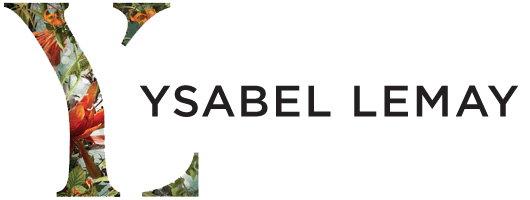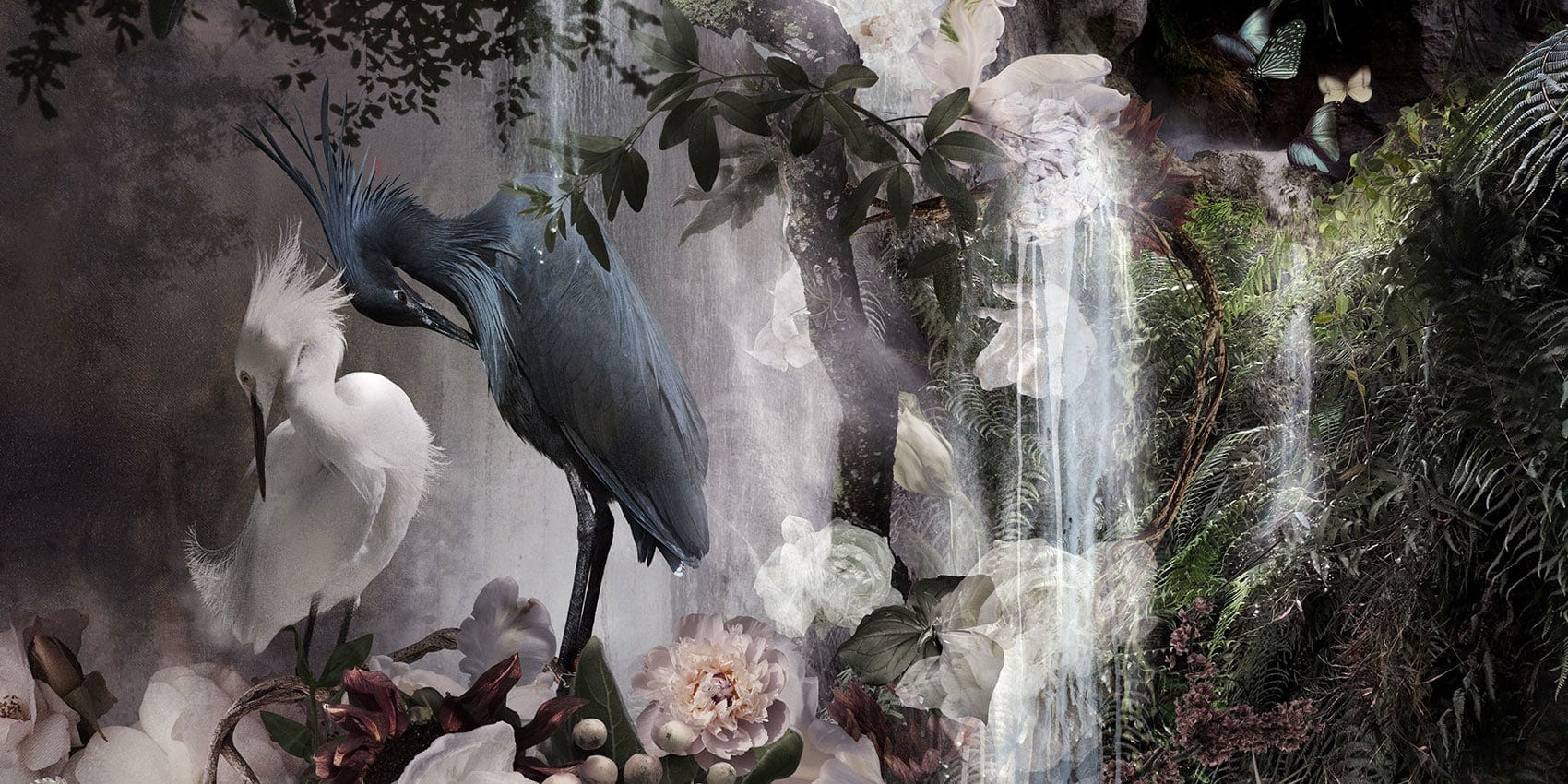Wonder Worlds
June 15, 2015
By Conor Risch
https://www.pdnonline.com/features/ysabel-lemays-hypercollage-composites-depict-worlds-of-wonder/
Ysabel LeMay’s “Hypercollage” Composites Depict Worlds of Wonder
[column-third-1-2]
Ysabel LeMay’s work, which was on display this spring at Catherine Edelman Gallery in Chicago, occupies a space between nature and technology, appearing both organic and engineered. Combining hundreds of digital images of flora and fauna into “hypercollages,” LeMay creates “wonderful other worlds” that confound viewers’ understanding of what they’re looking at.
“You never know if you’re underwater or on land, or if it’s a dream state,” LeMay told PDN from her home in Austin, Texas. “I play with perspective,” she says, and with the sizes of the plants, trees, flowers and birds that appear in her scenes. A small bird or flower might appear large, and vice versa. “I think that invites a deeper observation [of the living world],” she explains.
The Quebec-born LeMay, who had previously worked as an advertising creative in Montreal, took up photography in 2009 after working for several years as a painter. A friend gave her a digital camera and encouraged her to “have fun.” A month later she had produced two pieces, mandala-like digital composites made from images of mushrooms and goldfish.
When she showed her friend the images she had made, he gave the camera to her as a gift, and told her she could borrow whatever equipment she needed. “I felt extremely liberated when I started working with digital,” she says.
Though she worked hard and saw some success as a painter, she feels she found her perfect medium in digital photography. “I was so surprised, it felt like there was a person inside me that was coming out,” she recalls.
She spent long hours learning Photoshop, first with a technician and then on her own, while working on her pieces. She learned simple and complex Photoshop techniques simultaneously, rather than progressively, which allowed her to develop a unique, painterly style. “I also had to destroy a lot of work because sometimes I was overdoing it,” she says. When she’s come up against technical challenges either in her photography or her compositing, she’s hired experts to work with her and advance her technique. (She spent five months working with an After Effects expert to create forthcoming animated works, she says.)
Often her work begins with a vague intention, inspired by a particular image. She captures her source material on daily walks and on trips she makes specifically to add to her image library. From there she improvises. “I like to compare myself to almost like a jazz player,” she says. She channels emotions and experiences in her personal life into the work, which evolves throughout her process. Birds frequently appear in her compositions. They are totems that “represent the spirit of who I am,” she says, as well as the human spirit.
The work she creates, which she sees as feminine, is the opposite of her personality. “I can be quite tomboy,” she says. “I think this [work] is the true authenticity of my soul, of my visual language, and the only way that can come out of me is through this medium.”
An art collector herself, LeMay says the fact that “what I’m collecting is just so different” from her own art adds a sense of authenticity to the work. “Because I’m so surprised by the result, it’s not controlled by the market or what people expect from me,” she explains. “It’s just very pure.”
Interested in science from a young age, she’s studied subjects like biocentrism and biomimicry, and her work reflects a fascination with nature. “The architecture of my work is the architecture of the living world,” she says.
LeMay’s use of digital technology to create organic-looking works brings to mind contemporary questions about human intervention in the natural world through practices like environmental engineering, which proposes that humans can improve upon nature. The concept has attracted heavy debate as scientists and policymakers consider options for mitigating the effects of climate change.
While LeMay says any reference to environmental issues in her images “is not premeditated,” she does believe that her knowledge and awareness of these issues is helping to shape her work. “If you observe my work, it’s becoming more and more complex, more detailed, because that’s my understanding,” LeMay says. “As my vocabulary and my story is getting shaped, it also shapes the reasons why I’m doing [the work]. It’s evolving and now there’s a commitment coming from me that’s very different from the commitment that I had five years ago. I’m becoming much more conscious.”
[/column-third-1-2]
[column-third-3]
[/column-third-3]









